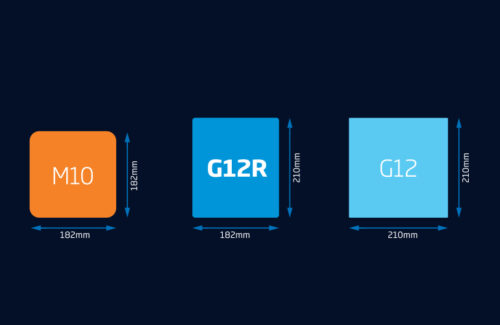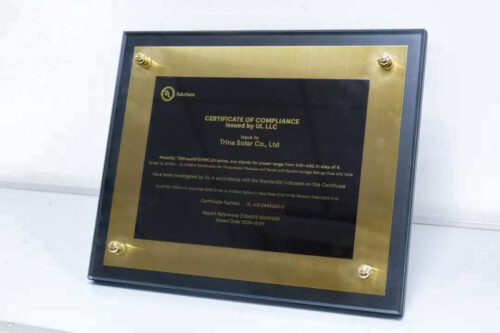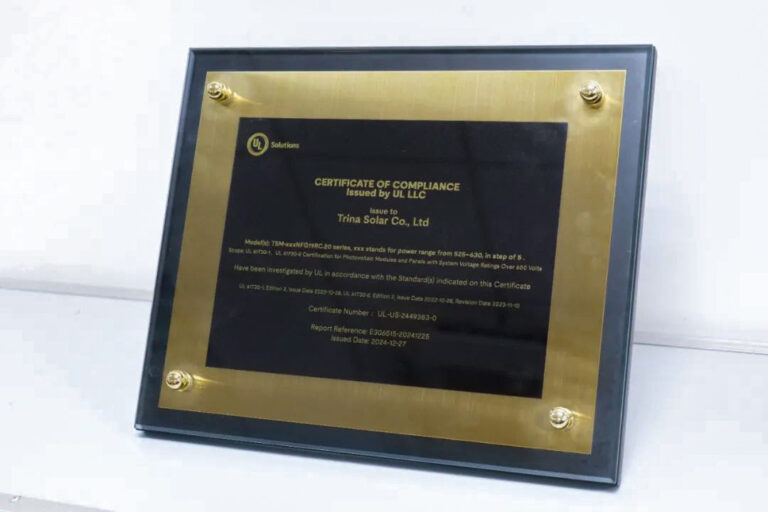Trinasolar announced that UL Solutions has granted Trina’s Vertex N 2,000-V solar panel UL 61730 certification.

A comparison of waffle sizes that are used in large format modules. Credit: Trinasolar
UL 61730 is the updated version of UL 1703, the “Standard for Fotovoltaic (PV) Module Safety qualification.” The corner point N 2,000-V is the first 210R panel to receive the UL 61730 certification for 2,000 V models. The wafer of the “210 mm reduced” (210R) has been hired by Trina for projects that are looking for solar panels in width. The 210R-Wafer is a G12 (210 mm) waffle with a reduced width (182 mm).
UL Solutions evaluated the quality and safety of Trina’s 2,000-V module in a wide range of environmental conditions. The module completed countless tests, including PID induced demolition, moisture heat, thermal bicycles, ultraviolet aging and B&B1 sequence tests. Trina’s test performance confirmed the reliability of the module in high-voltage environments and the possibility to meet the extreme requirements of 2,000 V applications.
 Based on Trina’s N-Type Topcon technology, provides the 2,000-V module to 620 W and 22.7% efficiency. This progress increases the string capacity and improves system performance for solar projects on Utility scale, which translates into a lower balance of the system (forest) and labor costs, improved level energy costs (LCOE) and shorter payback time.
Based on Trina’s N-Type Topcon technology, provides the 2,000-V module to 620 W and 22.7% efficiency. This progress increases the string capacity and improves system performance for solar projects on Utility scale, which translates into a lower balance of the system (forest) and labor costs, improved level energy costs (LCOE) and shorter payback time.
This module underwent design and materialup grades to overcome the technical challenges related to high-voltage environments. New innovations in considerations of the crawl distance, the use of high insulation materials and an optimized glass structure, together with improved components such as connection boxes, contribute to improved performance, reliability and safety. These improvements reduce the risk of arched breakdown, the prevention of short circuits and potential fire hazards, while the aging process of materials in high-voltage institutions is also delayed, guaranteeing the long-term operation of the module.
News item from Trina


